Porsche 918 Spyder

Porsche engineers took a pair of the 918 Spyder prototypes into the Nevada desert recently for hot-weather testing. (David Undercoffler / Los Angeles Times)
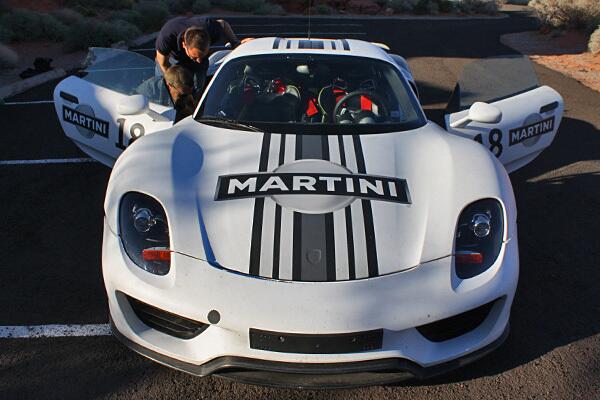
This Porsche 918 is adorned with a colorless variation of the famed Martini Racing livery. Production 918s will come in several basic colors, but customers will be able to order them with Martini’s red and blue stripes if they choose. (David Undercoffler / Los Angeles Times)
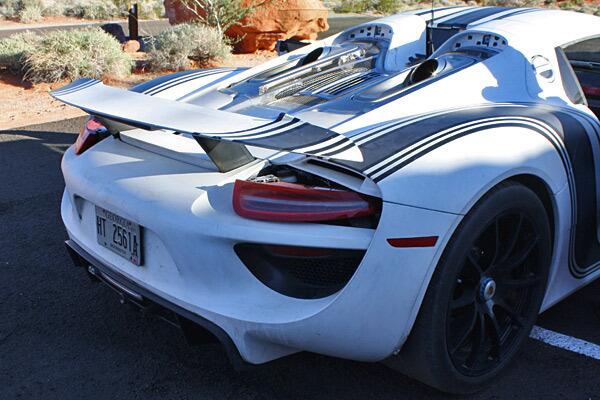
Though this prototype has a fixed rear wing, production 918s will have a spoiler that automatically deploys depending on the car’s speed and the drive mode it’s in. (David Undercoffler / Los Angeles Times)
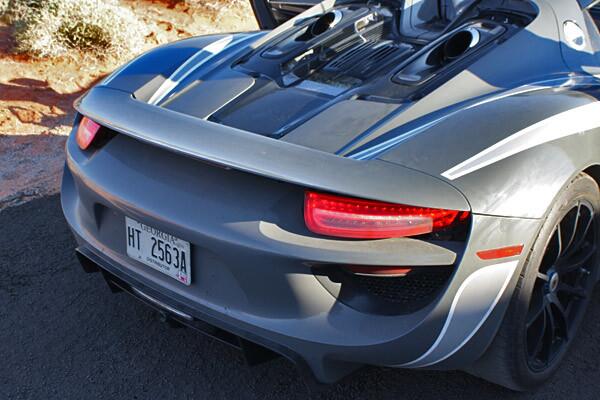
The other prototype 918 Porsche showed in Nevada displayed the deployable rear spoiler in its default position. (David Undercoffler / Los Angeles Times)
Advertisement
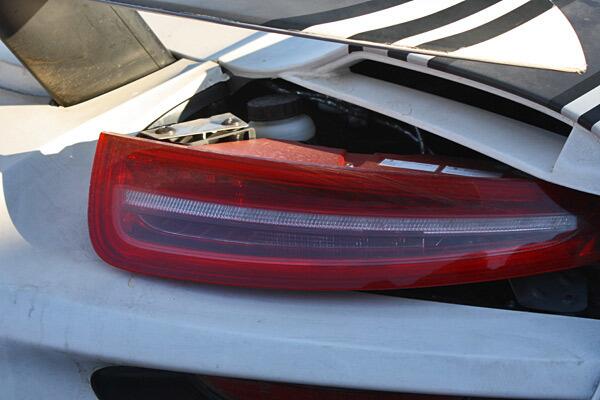
The taillamps on this 918 prototype may look familiar. Since the production pieces aren’t ready yet, Porsche engineers rigged up taillamps from the current 911 sportscar as a temporary fix. Production pieces will be mounted more flush to the car’s body. (David Undercoffler / Los Angeles Times)
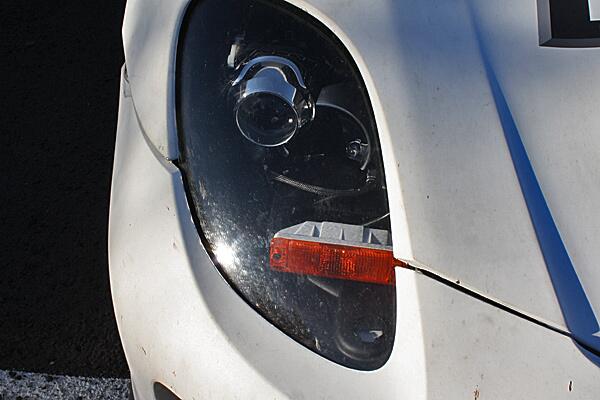
Meanwhile, the headlamps on this prototype also needed a bit of MacGyvering since the production units weren’t ready when Porsche put together this test car. Recognize those orange turn signals? They’re from a very early Volkswagen Golf. Corporate synergy at its finest. (David Undercoffler / Los Angeles Times)
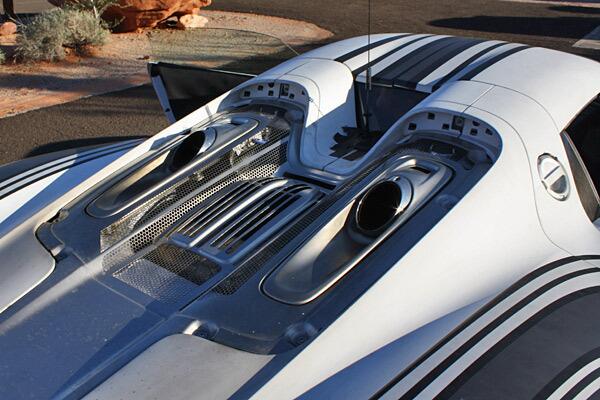
The original 918 Spyder concept shown at the Geneva Motor Show in 2010 had side-mounted exhaust pipes on either side. Unfortunately, because of the logistics of packaging side pipes, heat management within the car, and numerous emissions regulations around the globe, they were impossible for production. (David Undercoffler / Los Angeles Times)
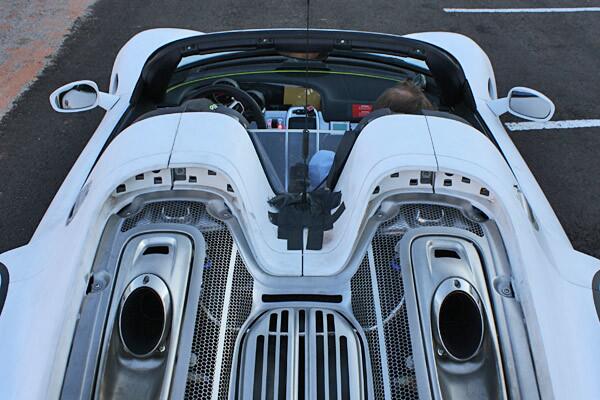
Thus, chief 918 engineer Frank Walliser said Porsche found the best way to package everything was to mount the muffler, catalytic converter and exhaust manifold on top of the engine, allowing the hot exhaust gases the most direct route out of the car. No one misses the side pipes when you have this as your alternative. (David Undercoffler / Los Angeles Times)
Advertisement
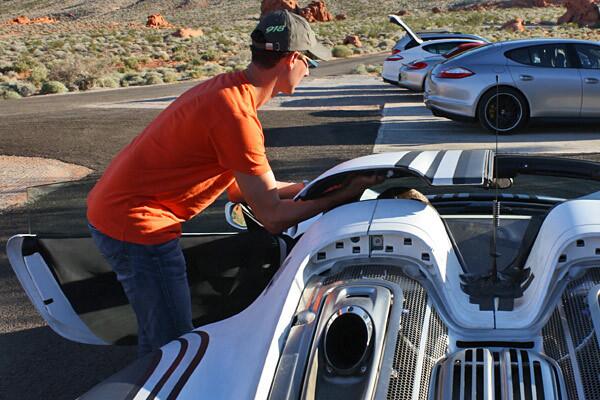
Two roof panels made from carbon-fiber-reinforced plastic are removable and can be stored in the 918s front-mounted trunk when not in use. Here, Frank Walliser, Frank Walliser, chief engineer on the 918 project, removes one of the panels. (David Undercoffler / Los Angeles Times)
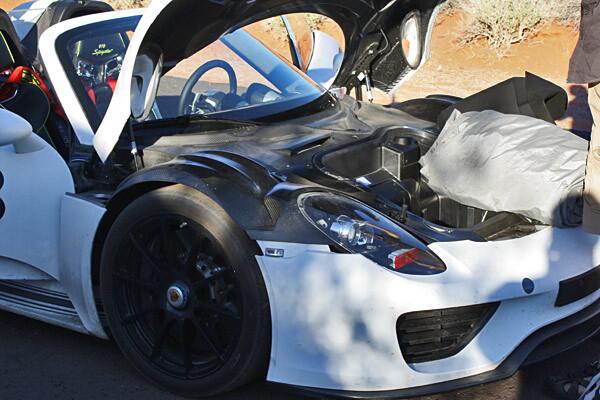
A shot of the front trunk, where the roof panels are stored when not in use. It’s not a huge space, but useable. Its 4.76 cubic feet of capacity is identical to Porsche’s 911. (David Undercoffler / Los Angeles Times)
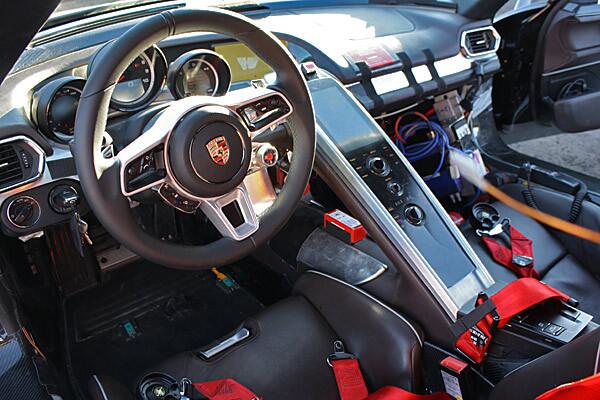
The design of the production 918’s interior will look very similar to this, minus all the wiring and diagnostic equipment. The center console rising toward the dashboard has a touchscreen mounted vertically, which will control a display screen above it. The steering wheel here is very close to production. The round dial at the lower right of the wheel is how the driver changes the car’s drive modes (the red button is the Hot Lap setting). (David Undercoffler / Los Angeles Times)
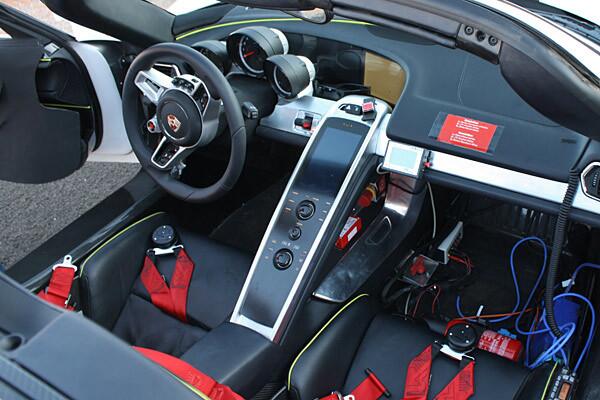
Note the small switch to the right of the steering wheel. This is the gear shift lever, with only park, reverse, neutral and drive. There are also steering wheel-mounted paddle shifters to manually control the seven-speed, dual-clutch transmission. (David Undercoffler / Los Angeles Times)
Advertisement
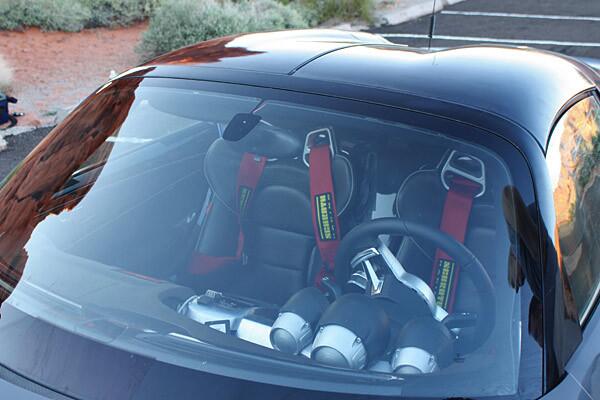
Production 918 Spyders will also have traditional seatbelts, rather than the racing harnesses you see here. This is a shot of one of the prototypes with its roof affixed, creating a tight seal for occupants inside. (David Undercoffler / Los Angeles Times)
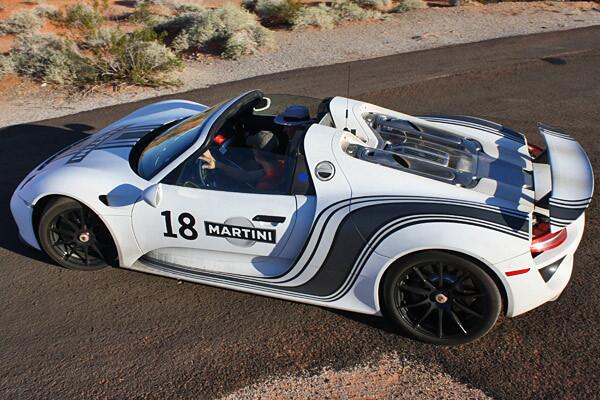
A Porsche 918 Spyder prototype heads out for another round of hot-weather testing in the Nevada desert. The cars will begin assembly on Sept. 18 of next year. (Note the significance of the date.) Price? A mere $845,000. (David Undercoffler / Los Angeles Times)



